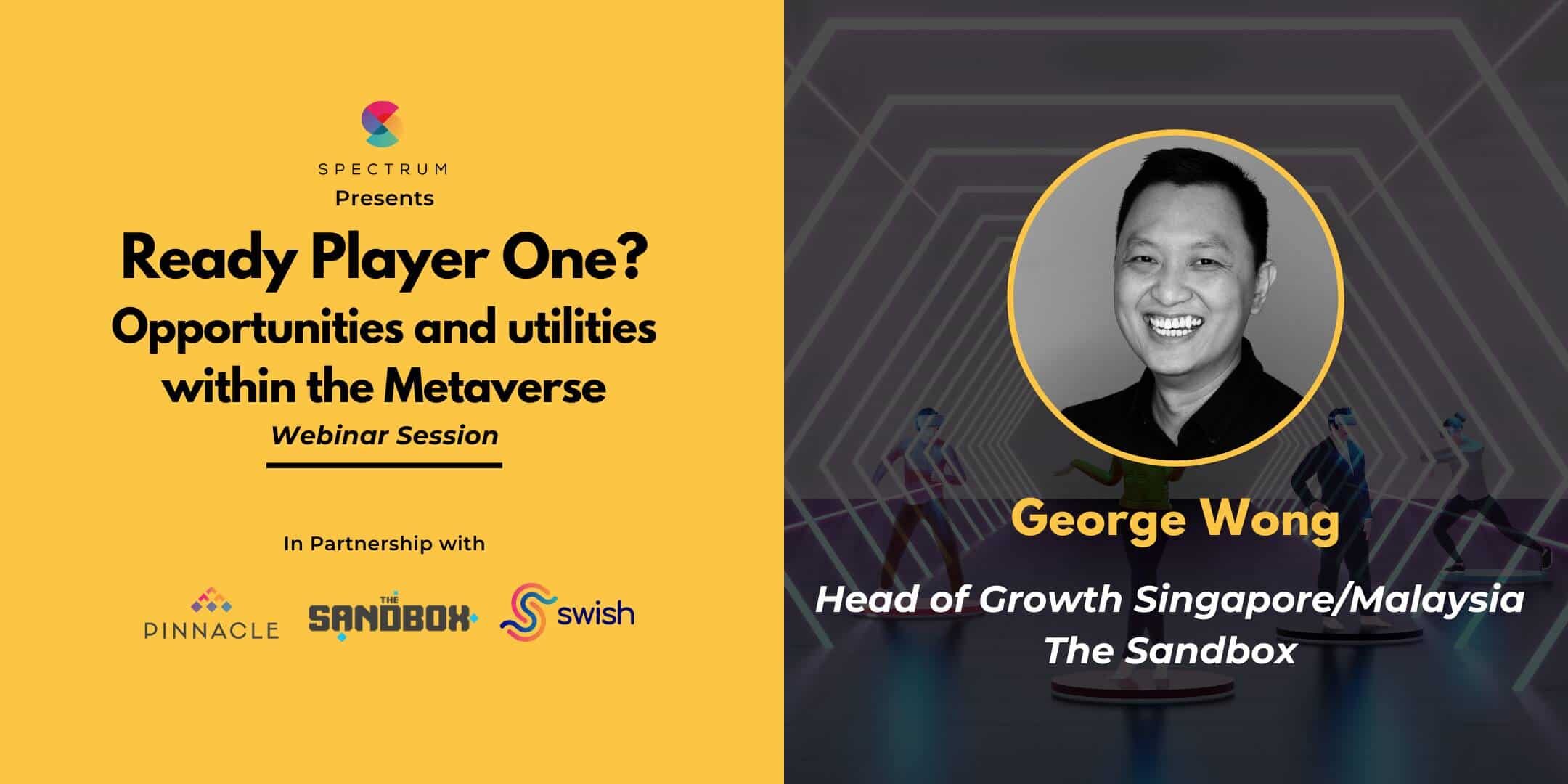
Ready Player One? Opportunities and utilities within the Metaverse
Swish | 3 November, 2022
Pinnacle, SPECTRUM and Swish recently joined forces to host George Wong (Head of Growth for Singapore and Malaysia at The Sandbox) at our recent “Ready Player One?” webinar.
Drawing from his insights working at The Sandbox, the third largest Metaverse based on the Ethereum blockchain, George Wong outlined some reasons for why the Metaverse could be a growing trend in the near future, and how brands of today can position themselves to capitalise on this growing trend.
The Bull Case for the Metaverse
A strong believer on the growth of the Metaverse, our guest kicked off his presentation by highlighting 3 reasons why the Metaverse may hold incredible growth potential.
Shrinking spaces
Virtual environments offer a spacious alternative for work and play amidst the backdrop of our increasingly shrinking physical environment, caused by population growth and increasing population density in urban areas.
Popularity of virtual experiences
Stay-home measures at the height of the COVID pandemic have also catalysed the popularity of metaverse-like games and experiences.
Potential upside (based on the gaming industry)
Although gaming only represents one of the Metaverse’s use cases, a growing audience of casual gamers (around 3 billion worldwide) and large volume of in-game spending on mobile games (US$50B in 2019) represent a huge potential upside for Metaverse games.
Generating revenue in the Metaverse
George Wong also highlighted how Metaverse projects can monetise their existing features, by drawing on the microtransaction business model that most free-to-play games have.
Similar to how many NASDAQ-listed game companies make use of the sale of in-game items as a key revenue driver, brands can also sell virtual assets (in the form of non-fungible tokens), which can not only generate revenue from the initial sale, but also reward the creator of the NFT with royalties from any subsequent sale of the NFT.
Additionally, NFTs provide a level of tangibility to intangible assets, by adding a verifiable proof of ownership on the blockchain. With NFTs now being a recognisable form of digital asset in the Singapore court of law, ownership disputes can easily be resolved.
Advice for the Metaverse-curious
For companies building their own Metaverse project, user-generated content (UGC) plays a vital role in promoting and rewarding platform users for their participation.
Regardless of the type of Metaverse experience a company is building (from browser-based ones for the mass market to hyper-realistic VR experiences), Metaverse platforms should include both “no-code” tools and secondary marketplaces for creatives and independent studios to design and sell their own virtual assets.
For brands looking to expand into the Metaverse, experimentation is key. Before staking out one’s brand presence in the Metaverse, companies should first try out as many Metaverse platforms as possible, and understand the look and feel of each platform in order to choose the best one to deliver an interactive experience to their existing audience.
The Takeaway
Different Metaverses have different focuses based on their design language. For Sandbox, their simplified graphics make it easy for anyone to create new content, regardless of their design knowledge.
Brands looking to enter the Metaverse should hence identify the strengths of each metaverse platform based on the user experience they can provide, before choosing the one most aligned to their current objectives – whether its engaging younger audiences online, or creating an immersive world to engage their current users.




Leave Comments